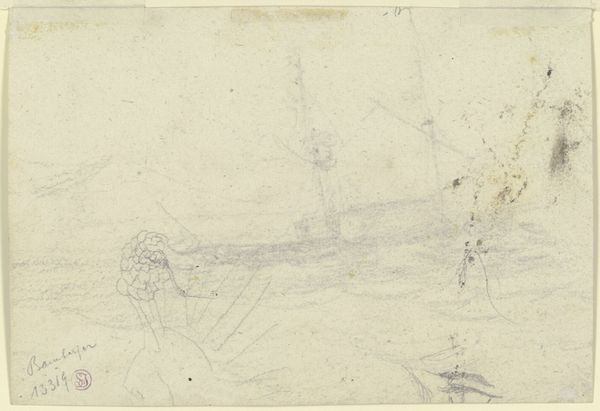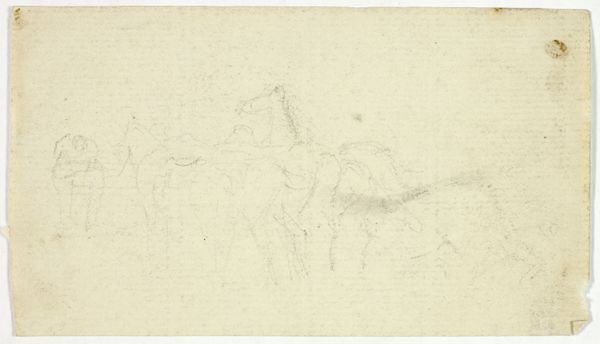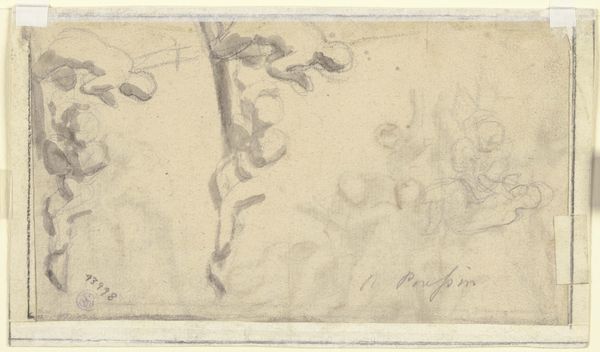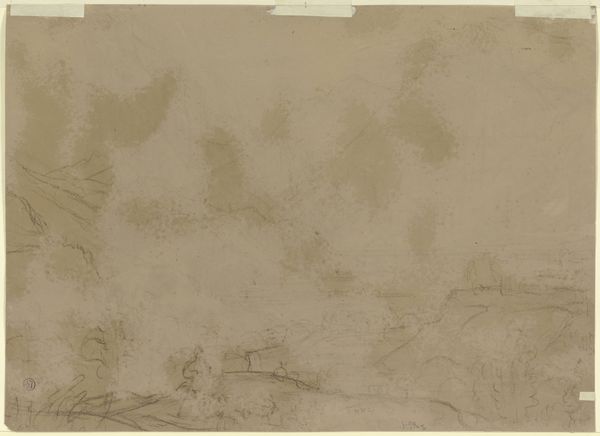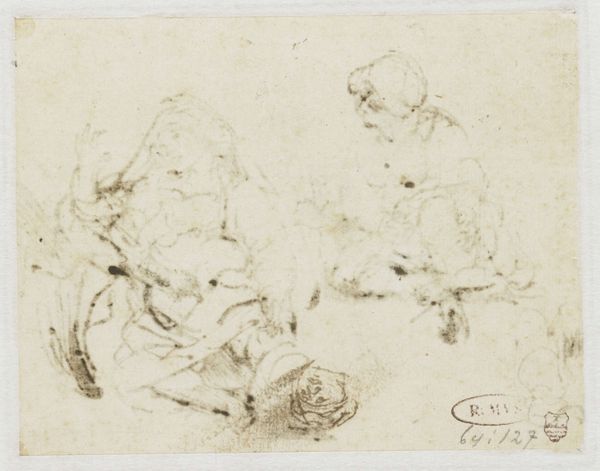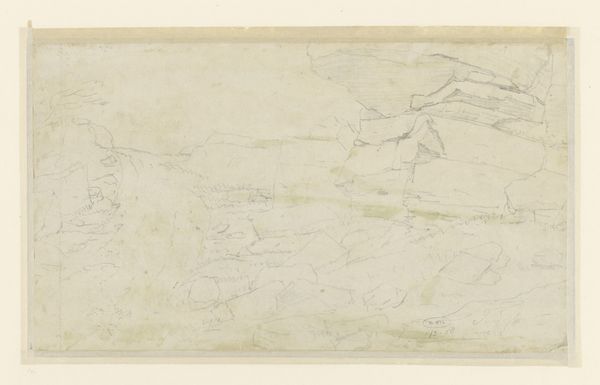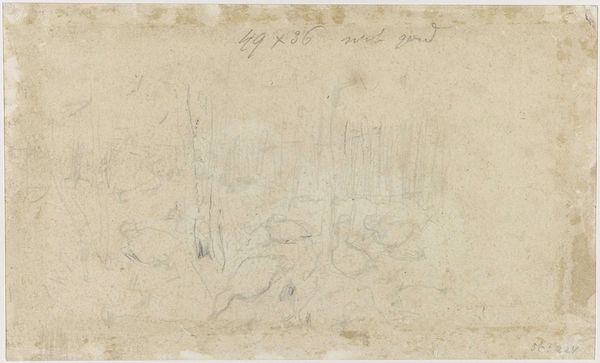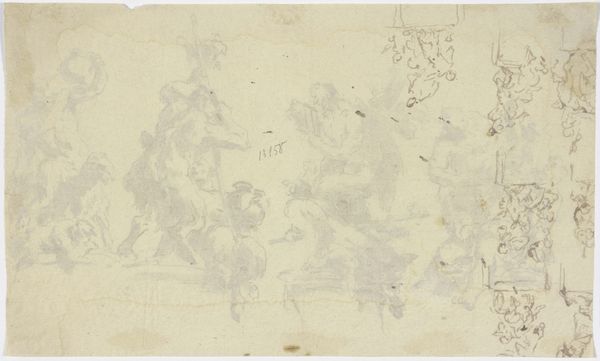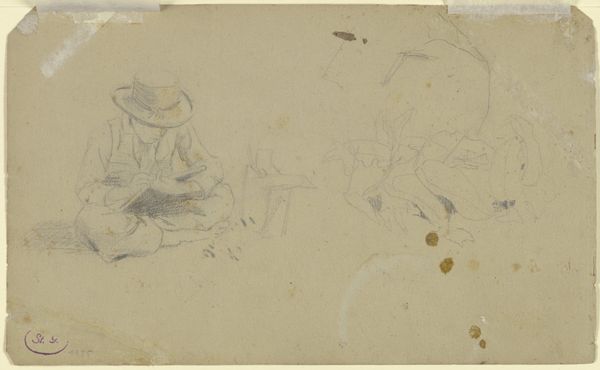
Kniender Johannesknabe mit Lamm und dem auf dem Kreuz schlafenden Christuskind c. 1640 - 1650
0:00
0:00
drawing, paper, ink, indian-ink, chalk
#
drawing
#
toned paper
#
light pencil work
#
baroque
#
french
#
pencil sketch
#
incomplete sketchy
#
possibly oil pastel
#
paper
#
ink
#
underpainting
#
indian-ink
#
chalk
#
14_17th-century
#
watercolour bleed
#
watercolour illustration
#
sketchbook art
#
watercolor
Copyright: Public Domain
Curator: This is "Kneeling Boy John with Lamb and the Christ Child Sleeping on the Cross," a drawing by Nicolas Poussin, dating from approximately 1640 to 1650. It’s currently part of the Städel Museum’s collection. Editor: It's a very quiet scene. The pale paper and delicate lines create this intimate, almost secretive feeling, like we are looking at the artist's private thoughts. Curator: Poussin was very interested in classical antiquity, which is visible in his focus on harmony and order, though softened by this delicate baroque touch. But, the theological weight of the drawing’s content sets up a dialogue between sacrifice, innocence, and the slumber before destiny. Editor: I’m intrigued by how the rough sketches reveal vulnerability, not just in the subjects but also in the making of the work itself. There’s a tension, knowing what the child will grow into. Does that lamb foreshadow sacrifice or symbolize innocence in a world moving towards unavoidable conflict? Curator: Think of the political context of the time: the consolidation of power by the French monarchy and the church’s firm grip on society. Poussin, deeply tied to intellectual circles, may have been wrestling with his role in conveying theological themes, or he could simply have wanted to render religious stories. The act of drawing itself was often considered a private and explorative act in an artist's process. Editor: Maybe Poussin felt conflicted. The casualness of the lines paired with heavy symbolism hints at internal debates, questioning the stories he portrays through the Church, or simply understanding a need for both peace and preparedness in a violent world. The ambiguity allows space for dissent or just introspection within these sketches, reflecting broader socio-political debates. Curator: Ultimately, whether read as a testament of faith or as a contemplation of religious power, "Kneeling Boy John" gives us a glimpse into Poussin's complex world and artistry, showing a moment where private thought translates onto paper. Editor: Indeed. These sketches bring us closer not only to the themes that Poussin was representing but to Poussin, the human.
Comments
No comments
Be the first to comment and join the conversation on the ultimate creative platform.
